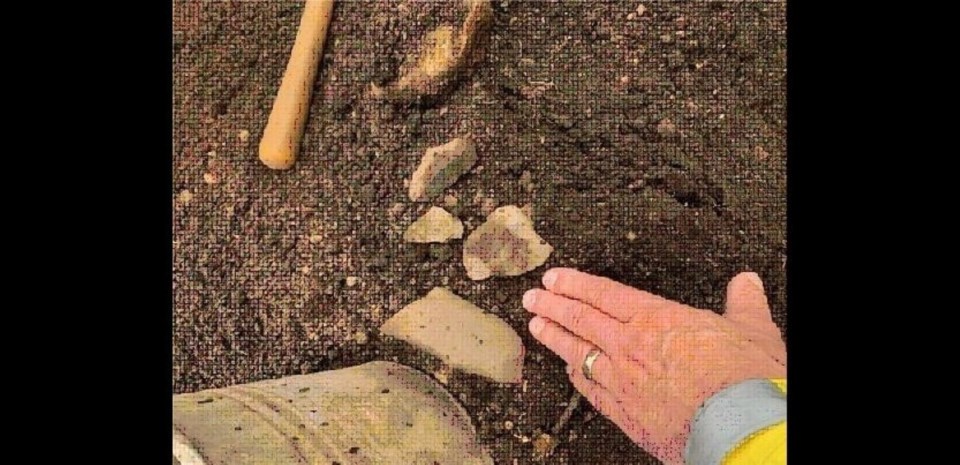Among the flurry of work happening at the Horseshoe Bay Park revitalization site, Indigenous artifacts have been recovered under the guidance and direction of local First Nations and archeologists.
District of West Vancouver staff have confirmed that since beginning to dig by hand in February, artifacts including arrowheads and lithics, which are stones that have been manipulated to fashion into a tool, have been found in the area.
The area itself has a subsurface shell midden and has been associated with a seasonal use fishing village. The site is listed in the provincial inventory of archeological sites and historic places and is protected under the Heritage Conservation Act.
The district had an archeological impact assessment in June 2021 and an archeology permit was obtained in conjunction with the park restoration work.
According to the district, Musqueam, Sḵwx̱wú7mesh (Squamish), and Tsleil-Waututh Nations were all notified of the dig and subsequent findings, and a representative from TWN has been on-site. Completing the hand-digging portion on June 1, the district said in a statement to North Shore News that if the Nation advises at anytime moving forward that hand-digging is recommended again, the district will comply.
In a statement to North Shore News, Sḵwx̱wú7mesh Úxwumixw (Squamish Nation) spokesperson Sxwíxwtn (Wilson Williams) said the Nation is taking steps to protect the park that’s being redeveloped within its traditional territory in Ch’ax̱áy̓ (Horseshoe Bay).
“We had a prominent village there before colonization and, to this day, our people catch herring near the shore and harvest their eggs. Protecting archeological sites is vital as they show our deep connection with the land and help us learn more about how our ancestors lived over the past 12,000 or so years,” he said.
The redevelopment of the park, which began in February, is aimed at creating a free-flowing and connected park space all the way from the BC Ferries terminal to Horseshoe Bay Pier. Slated to be completed early next year, the park will include a new playground, a waterfront path, picnic shelter and improved lighting.
“The District of West Vancouver was sensitive to what was known about this site, so that we could be the least intrusive as possible,” the district said in its statement. “In consultation with First Nations, the information learned about this area informed the planning and design of the park. The design of the park was created after significant community input and with information about the archeological site.”
The found artifacts have been sent to UBC’s department of archeology and catalogued, while the First Nation’s monitors and the archeologist remain on site. Despite rumours of unmarked graves being found, the district has confirmed that no graves have been uncovered, nor are they expected to be.
Tsleil-Waututh Nation declined to comment.
Charlie Carey is the North Shore News' Indigenous and civic affairs reporter. This reporting beat is made possible by the Local Journalism Initiative.



